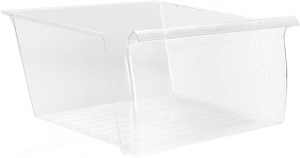Contents
- Understanding Tube Feeding
- Types Of Tube Feeding
- Preparing For Home Tube Feeding
- Administering Tube Feeding
- Ensuring Proper Nutrition
- Promoting Comfort And Safety
- Supporting Digestion And Elimination
- Addressing Common Concerns And Challenges
- Tube Feeding Transition And Discontinuation
- Enhancing Quality Of Life
- Frequently Asked Questions Of Tube Feeding At Home: A Guide For Families And Caregivers: Nurturing Medical Care
- How Is Tube Feeding Done At Home?
- What Are The Benefits Of Tube Feeding At Home?
- What Are The Possible Complications Of Tube Feeding At Home?
- How Can I Ensure Proper Hygiene During Tube Feeding At Home?
- How Often Should The Tube Feeding Equipment Be Replaced?
- What Should I Do If There Are Complications Or Concerns During Tube Feeding At Home?
- Conclusion
Tube feeding at home is a guide for families and caregivers providing nurturing medical care. This article offers valuable information and guidance on the topic in a simple and concise manner, ensuring easy understanding for readers.

Credit: familytreecares.com
Understanding Tube Feeding
Tube feeding is a medical intervention used for individuals who cannot consume food orally. It involves delivering nutrients and fluids directly into the stomach or small intestine through a tube. The process works by carefully inserting a thin, flexible tube through the nose or abdomen into the desired location.
Tube feeding is often recommended for patients with various conditions such as dysphagia, neurological disorders, or severe malnutrition. By bypassing the oral route, tube feeding ensures that individuals receive the necessary nourishment to maintain their health and well-being. Understanding the basics of tube feeding is vital for families and caregivers who are responsible for the day-to-day management of this medical intervention.
It is crucial to work closely with healthcare professionals to ensure the safety and effectiveness of tube feeding for the individual’s specific needs.
Types Of Tube Feeding
Tube feeding can be administered in various ways depending on the patient’s needs. One common method is nasogastric tube feeding, which involves inserting a tube through the nose and down into the stomach. This allows for direct delivery of nutrients and medications.
Another option is gastrostomy tube feeding, where a tube is surgically placed directly into the stomach. This method is often used for patients who require long-term feeding. Jejunostomy tube feeding is another option, involving the placement of a tube directly into the jejunum, bypassing the stomach.
This may be necessary for patients with gastrointestinal issues. Each type of tube feeding comes with its own considerations and care requirements, so it’s important for families and caregivers to work closely with healthcare professionals to ensure proper administration and maintenance of the feeding tube.
Preparing For Home Tube Feeding
Preparing for home tube feeding requires consulting with healthcare professionals to ensure proper care. Families and caregivers should seek advice on setting up a safe and hygienic environment. It is crucial to acquire the necessary equipment for effective tube feeding at home.
Consulting healthcare professionals helps in understanding the correct procedure to follow. They can provide guidance on maintaining cleanliness to prevent any potential infections. With their expertise, families and caregivers can create a nurturing space for the tube-fed individual. Proper preparation allows for a smooth transition from hospital to home care, ensuring the well-being of the patient and providing the necessary support for the caregivers.
The guidance provided by healthcare professionals is invaluable in making home tube feeding a successful and comfortable experience for everyone involved.
Administering Tube Feeding
Tube feeding at home can be challenging for families and caregivers. Administering feeding requires careful handling and storing of the feed. Flushing and cleaning the tube regularly is essential to prevent any complications. Monitoring for any signs of complications is crucial for the well-being of the person receiving tube feeding.
It is important to be attentive and responsive to any changes or issues that may arise during the feeding process. Providing nurturing medical care is vital to ensuring the best possible outcomes for patients relying on tube feeding at home.
Proper education and support can empower families and caregivers to confidently manage tube feeding and provide the necessary care for their loved ones.
Ensuring Proper Nutrition
Tube feeding at home can provide nurturing medical care for individuals who require it. When ensuring proper nutrition, selecting the right formula is crucial. It is essential to adjust feed amounts based on specific needs and closely monitor nutritional challenges.
The right formula should meet the patient’s dietary requirements and health conditions, such as allergies or intolerances. Regular assessment of the patient’s weight, growth, and overall well-being helps determine adequate feed amounts. Nutritional challenges may arise, which require close attention and management.
These challenges could include problems with digestion, absorption, or intolerance to certain nutrients. Implementing dietary modifications or seeking professional guidance can help address these challenges effectively. Providing proper nutrition through tube feeding at home requires careful consideration, monitoring, and adaptation to ensure the patient receives the necessary nourishment for their well-being.
Promoting Comfort And Safety
Promoting comfort and safety during tube feeding at home involves implementing effective positioning techniques. Proper positioning ensures that the individual receiving tube feeding is in a comfortable and supported posture, minimizing the risk of complications. Regular repositioning is crucial to prevent pressure ulcers and skin irritations.
Emphasizing infection control measures greatly reduces the risk of infections. It is essential to maintain a clean environment, follow appropriate hand hygiene practices, and regularly clean the feeding tube and connection sites. Addressing discomfort and resistance during tube feeding is another important aspect of caregiving.
Encouraging a calm and relaxed environment, using distraction techniques, and involving the individual in the process can help alleviate any discomfort or resistance they may experience. By adhering to these guidelines, families and caregivers can provide nurturing medical care while ensuring the safety and well-being of their loved ones.
Supporting Digestion And Elimination
Supporting digestion and elimination is crucial for individuals who require tube feeding at home. Managing bowel movements plays a vital role in maintaining overall health and well-being. To minimize constipation, incorporating high-fiber foods and ensuring proper hydration is essential. Adding fruits, vegetables, and whole grains to the tube feeding formula can assist in regular bowel movements.
On the other hand, preventing diarrhea involves maintaining a balanced diet and avoiding excessive fiber intake. Consulting a healthcare professional or registered dietitian is recommended to determine the appropriate amount of fiber for tube-fed individuals. By carefully managing bowel movements, families and caregivers can ensure optimal nutrition and comfort for their loved ones receiving tube feeding at home.
Addressing Common Concerns And Challenges
Tube feeding at home can bring about various concerns and challenges for families and caregivers. Dealing with nausea and vomiting is a common issue that needs to be addressed. Preventing tube blockages is another crucial aspect to consider in order to ensure effective feeding.
Furthermore, handling tube dislodgement requires careful attention and action. These challenges can be tackled through proper education and guidance from healthcare professionals. By understanding the causes of nausea and vomiting, strategies to minimize discomfort can be implemented. Regular cleaning and flushing of the tube can help prevent blockages.
Additionally, it is important to be aware of signs of tube dislodgement and take prompt action to secure the tube back in place. With the right knowledge and support, families and caregivers can provide nurturing medical care for individuals receiving tube feeding at home.
Tube Feeding Transition And Discontinuation
Transitioning from hospital to home can be a challenging process when it comes to tube feeding. Families and caregivers should be well-prepared and educated on the process of tube removal. It is important to ensure that the patient receives proper nutritional support after tube feeding is discontinued.
The transition involves a careful assessment of the patient’s needs and the development of a suitable care plan. Families should work closely with healthcare professionals to ensure a smooth transition from hospital to home. The removal of the feeding tube should be done gradually, taking into consideration the patient’s condition and response.
Nutritional support may still be required even after tube feeding is stopped, and this should be discussed with the healthcare team. The goal is to nurture medical care and provide the best possible support for the patient during this transition period.
Enhancing Quality Of Life
Enhancing quality of life is crucial for individuals receiving tube feeding at home. Emotional and psychological support plays a vital role in ensuring their well-being. It is important to engage in social activities that bring joy and a sense of belonging.
By fostering independence, caregivers can promote self-esteem and confidence. Encouraging individuals to express their feelings and providing a safe space for emotional support can make a significant difference in their overall happiness. Participating in social activities can help maintain social connections and prevent feelings of isolation.
Empowering individuals to take charge of their daily tasks fosters a sense of accomplishment and autonomy. Inculcating a sense of independence through small steps like self-feeding can boost self-confidence, maintaining their dignity. Ultimately, nurturing emotional well-being and independence can greatly enhance the quality of life for tube feeding patients at home.
Frequently Asked Questions Of Tube Feeding At Home: A Guide For Families And Caregivers: Nurturing Medical Care
How Is Tube Feeding Done At Home?
Tube feeding is a method to deliver nutrition directly into the stomach using a tube. At home, the caregiver needs to follow the healthcare professional’s instructions on inserting the tube, flushing it, and administering the right amount of formula or liquid nutrition.
What Are The Benefits Of Tube Feeding At Home?
Tube feeding at home allows the patient to receive necessary nutrition in a familiar and comfortable environment. It reduces the risk of infections associated with hospital stays and provides flexibility in managing feeding schedules. Additionally, it promotes family involvement and enables a better quality of life.
What Are The Possible Complications Of Tube Feeding At Home?
While tube feeding at home is generally safe and effective, there are potential complications to be aware of. These include tube dislodgement, clogging, infection, skin irritation, and experiencing high or low blood sugar levels. It is important for caregivers to receive proper training and have access to healthcare professionals for support.
How Can I Ensure Proper Hygiene During Tube Feeding At Home?
Maintaining proper hygiene is crucial to prevent infections. Wash your hands thoroughly before handling the feeding equipment. Clean the feeding tube site daily using warm water and mild soap as per your healthcare professional’s instructions. Follow proper sterilization techniques for equipment and ensure a clean environment during the feeding process.
How Often Should The Tube Feeding Equipment Be Replaced?
The frequency of tube feeding equipment replacement may vary, so it is important to consult the healthcare professional for specific guidelines. In general, feeding bags and tubes are usually replaced every 24 to 48 hours to ensure hygiene and reduce the risk of contamination.
Regular checks should be done to ensure the equipment is in proper working condition.
What Should I Do If There Are Complications Or Concerns During Tube Feeding At Home?
If you encounter any complications or concerns during tube feeding at home, it is important to contact your healthcare professional immediately. They can provide guidance, advice, or refer you to a specialist if needed. Do not hesitate to seek professional help whenever you have doubts or encounter issues during the feeding process.
Conclusion
Tube feeding at home can be a challenging yet potentially life-saving option for families and caregivers navigating the complex world of medical care. By following the guidelines outlined in this guide, you can ensure the safe and effective administration of tube feeding, leading to improved nutrition and overall well-being for your loved one.
Remember to consult with your healthcare team for personalized advice and guidance throughout the process. Communicate openly with your child or patient, empowering them to participate in their own care and fostering a sense of independence. Stay knowledgeable about the latest advancements in tube feeding technology and nutrition, as this field continues to evolve.
Finally, never underestimate the power of a support network—reach out to other families and caregivers who have experience with tube feeding for advice, encouragement, and a sense of community. Together, we can navigate the challenges and provide nurturing care every step of the way.











